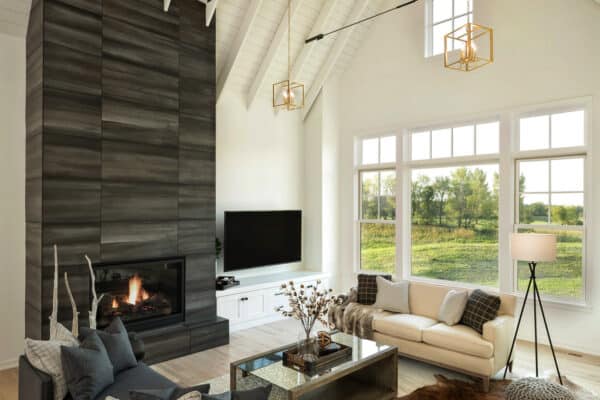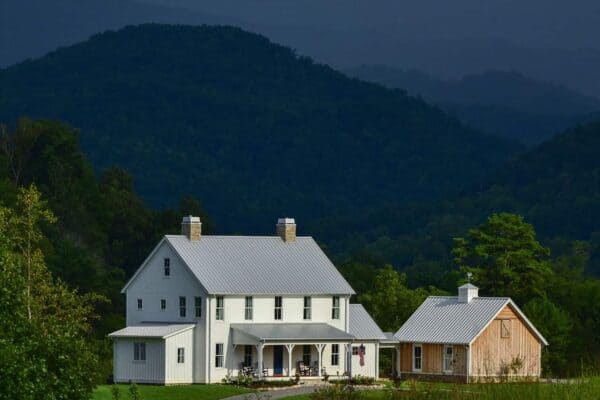
While kitchen backsplash materials typically consist of glass, wood, metals and stone, cement tile backsplashes have become popular due to several benefits. They are environmentally friendly in that they are comprised of natural components, and since they are not fired, no fossil fuels have been burned in their production. They have also been created with natural pigments. They are customizable since each tile has been hand crafted. If you do not see a color combination, shape or size you like in stock, the manufacturer can simply create one to fit your needs. The tile backsplash creates a protective shield over the wall in your kitchen which helps prevent damage from spills and splatters. Tile is so much easier to clean and keep clean. Tiles come in a handy size for relatively simple installation.

“Tile is still the most popular backsplash material, with natural stone a fast-growing second,” says John Morgan, 2013 National President of the National Kitchen and Bath Association. “But with the right installer, you can make just about any material work.

Cement tiles were first produced in the South of France in the 1870s. They are known under various names such as Mission tiles, Cuban tiles, Victorian tiles, and hydraulic tiles. Cement tiles are popular in Mediterranean and Latin style spaces and are generally highly patterned with geometric and floral designs. Cement tiles are formed by hand pouring pigmented cement into decorative molds in order to separate the colors. When the cement has been set, the molds are removed and the tile compressed with 2,000 pounds of pressure. The result is an irresistible work of art to create a beautiful kitchen backsplash. Cement tiles are technically concrete tiles since they include aggregates such as marble dust and a layer of sand for reinforcement.


Something to Consider:
The floor, countertop and backsplash must all work together for your kitchen to have an even, balanced look. Keep in mind that the backsplash should not be treated as a separate entity to the overall space. All elements need to work to create an overall effect.



Tip: In order to calculate the amount of tile you will need, measure the square footage of your kitchen backsplash, we recommend 15% overage for waste, cuts, and borders for most standard installations.


Materials and tools you will need to create your own backsplash:
Adhesive, tile spacers, notched trowel, bucket, tape measure, grout and grout sponge. Tip: Pick a grout color that complements your tile, avoid an exact color match. Select one that will be easy to keep clean and try to stay away from bright white, unless you love scrubbing. Seal the cement tiles with a penetrating sealer like HydraGuard first. Install it. Then seal the grout. The sealer protects from grout staining. Premixed grout with sealer is not the best, so use with sanded grout and then seal it. It’s a far better process and better protection.



Use graphic encaustic cement floor tiles, such as these Moroccan imports, on the wall. The thick handmade squares fit together like puzzle pieces to form colorful medallions. Shown in the picture are 8-by-8-inch tiles in the Meilla pattern, $7.25 each. Rustico Tile & Stone’s price is $7.80 for a 5-color tile. Prices vary based on how many colors are in the design.


Cement tiles are typically 8 by 8 inches and run about $15 to $29 per square foot. Rustico Tile & Stone’s price range for standard 8×8 tiles are $9-$17/sf. Installation would be the same as ceramic or porcelain tile, with one big difference. Cement tile has to be sealed with penetrating sealer after is has been set but before grouting. The sealer will protect the front facade of the tile from absorbing the grout material.





This is a modern style kitchen with a display of classical black and white color tones. The kitchen features 8″×8″ Moroccan cement tile backsplash creates an astonishing wallpaper effect with its daring black and white design. While the Superwhite granite counter tops negotiates the glossy white color transition with the large size dark charcoal porcelain tiles on the kitchen floor.



Photo Sources: 1. Buckminster Green LLC, 2. Casa, 3. Hello Kitchen, 4. Cement Tile Shop, 5. Avente Tile, 6. Eenig Wonen, 7. KitchenLab Design, 8. Made a Mano, 9. Eenig Wonen, 10. Original Style, 11. Mosaic House, 12. ThinkMakeBuild, 13. Villa Lagoon Tile, 14. BHG, 15. The Design Files, 16. Purpura, 17. Made a Mano, 18. Weranda, 19. Skeppsholmen, 20. Ceramiques Hugo Sanchez Inc, 21. Made a Mano, 22. Chad McPhail Design, 23. Est Magazine








2 comments